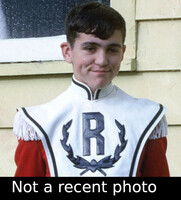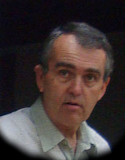My Ham Radio Elmers
Category: Ham RadioDate: 2025-04-15
In ham radio lingo, an "Elmer" is an experienced ham who helps a novice on his way to learn the hobby. When I returned to ham radio in 2024, I heard the term, "Elmer" for the first time. It seems the word gained use after I left the hobby in the mid 1970's. One source says it came from a 1971 article in QST magazine:
[Elmer] first appeared in a 1971 QST article by Rod Newkirk, W9BRD, in which he bemoans the all-too-familiar story of an eager student who falls off the Amateur Radio wagon once his mentor moves away. He wrote, “Too frequently one hears a sad story in this little nutshell: ‘Oh, I almost got a ticket, too, but Elmer, W9XYZ, moved away and I kind of lost interest.'”
As I have become reacquainted with ham radio, I've thought about who my Elmer was back in 1970. I have concluded that I had three Elmers, not one. In my small town of Raymond, Washington, I drew on the knowledge and support of three men: Ken Bale (W7VCB), Pete Lapinski (W7BMB) and my dad, Harvey McGuire. Ironically my dad was never a ham. But I'm certain he knew more about radio electronics than anyone else in town. He worked as a radio repairman, and held an FCC license to work on maritime, aviation, and certain fixed-base radios. He also knew the hams in town.
When I expressed an interest in the hobby, Dad introduced me to Ken Bale, W7VCB. Ken had a home on the Bale farm just outside of town in Baleville. Ken was not a farmer. Instead, he enjoyed the expansive property for his large antenna farm. The antennas I remember were a rhombic for 160 meters, which I believe used a full mile of wire. He had a cubical quad atop his house and Sterba Curtain phased arrary that stretched a quarter mile across a nearby canyon. His basement shack was heated by a floor to ceiling linear amplifier, which as he said, he always throttled back to the legal maximum of 1 KW. I enjoyed the hours I spent in his company. Whenever I saw him around town in his antenna laden VW microbus, he would toot out to me "dit-dit-dit-dit dit-dit" (HI).
When I came back to the hobby last year I did some Googling to see what I could find of Ken, and happily on eBay I found a QSL card signed by Ken. On that card, Ken documented a QSO he had in 1959. The front of the card bears the callsign "EL4C" of Liberia, where Ken spent time in Christian missionary service.
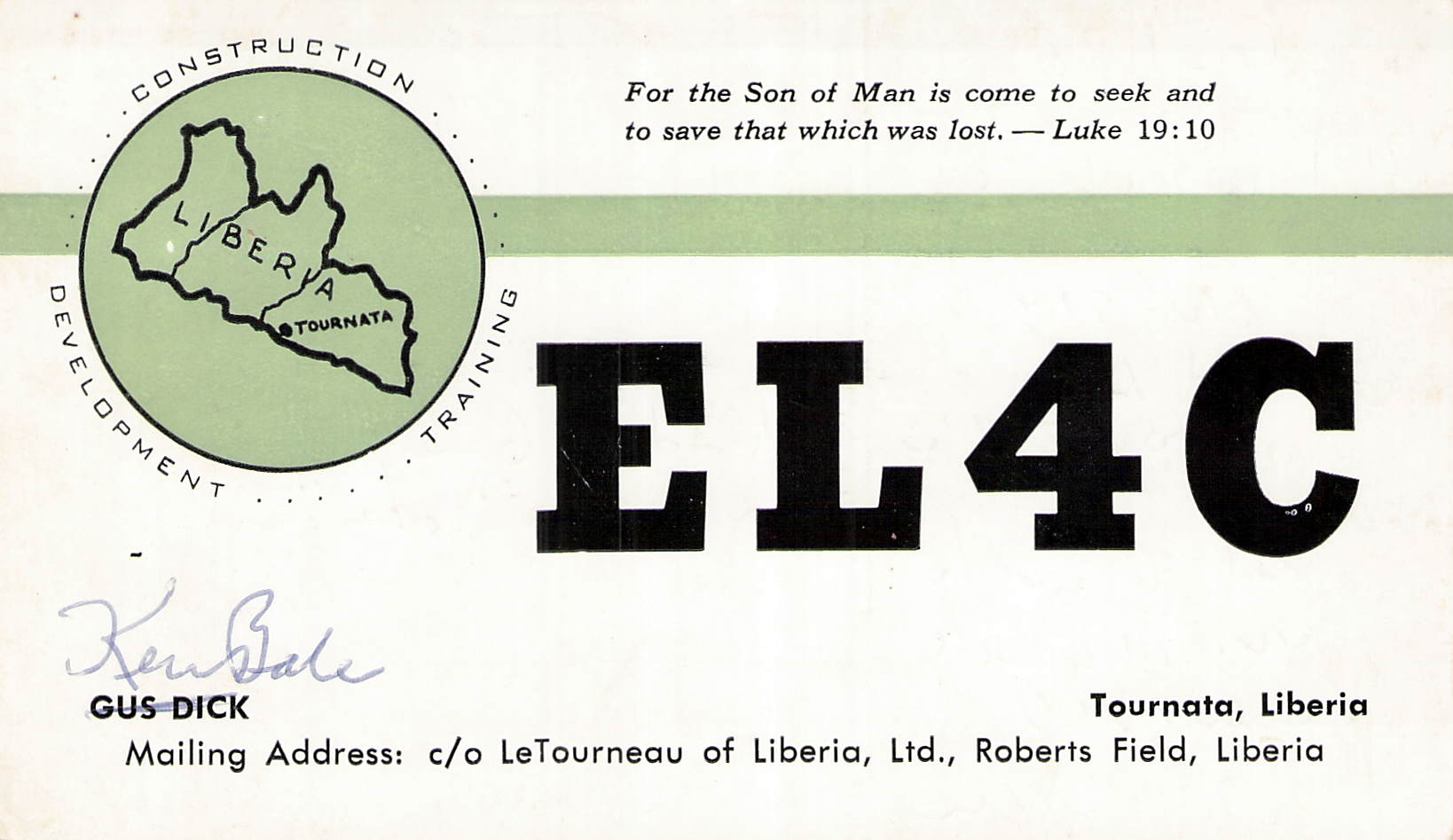
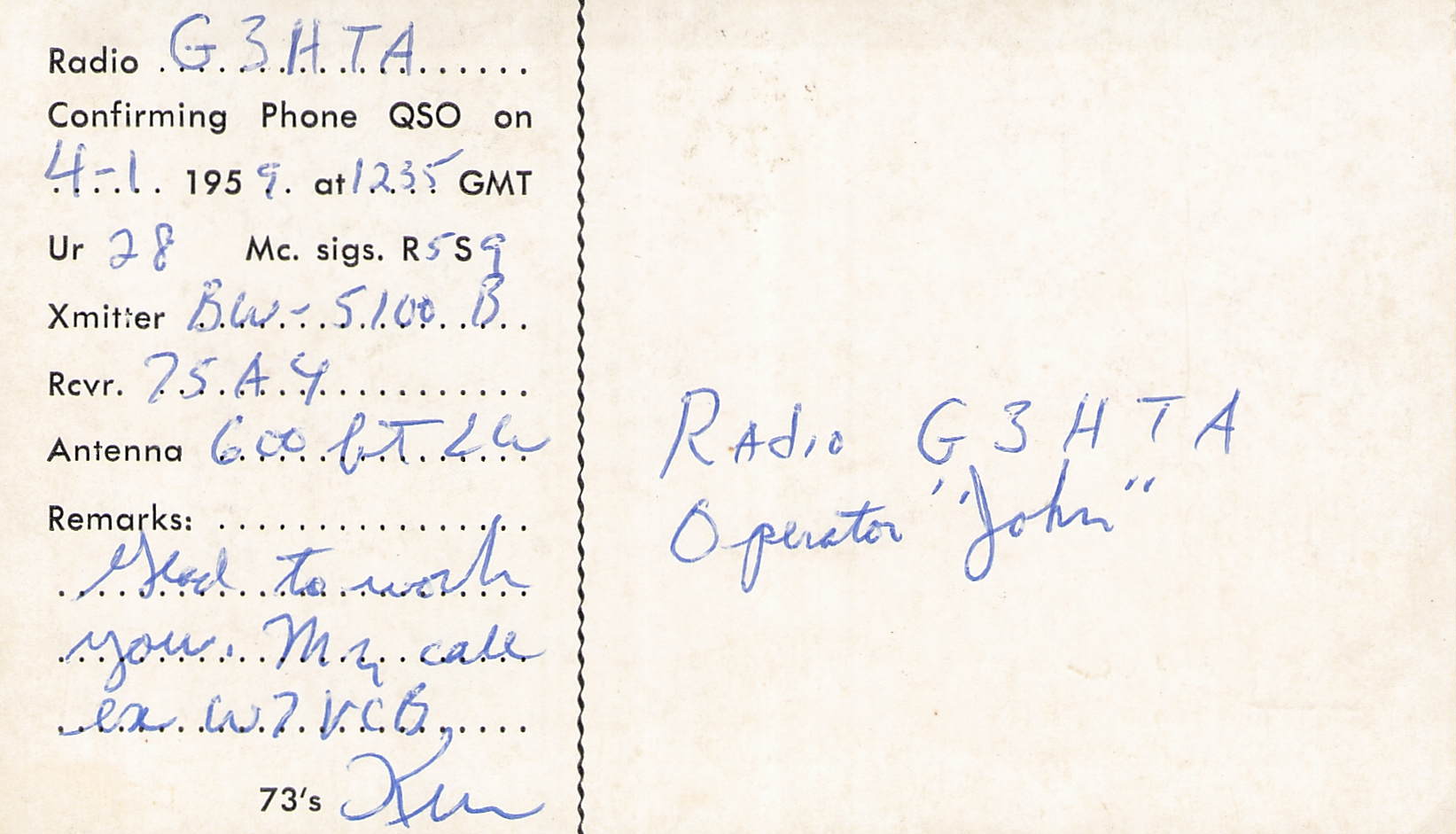
I was absolutely in awe of Ken's station and his rapid fire CW generated with a Vibroplex bug. He operated a Drake T4B and R4B transmitter/receiver pair, which I still covet today on eBay even though I operate today's state-of-the-art equipment.
Ken referred me to Pete Lapinski, W7BMB, for morse code training and for my Novice Class licensing exam. It was great to get to know Pete. I already "knew" Pete as I think everyone in my Riverdale neighborhood did. Pete owned many rental properties in the neighborhood, including (as I recall) the neighborhood grocery store, where my paper route started for many years. But at the time I didn't know that Pete was a ham!
I did know that Pete was a character, and the more I learned of that character, the more I liked it. Pete was also a cheerleader for my journey into the ham radio hobby. He was my instructor in CW sending, giving me hands-on training to develop a "good fist." He also "suggested" that I pay no attention to the less pure sending that came from Ken's bug, because those things were an "abomination." First impressions are lasting ones, but I did take up sending with an electronic keyer and paddle last year. I still have a pretty good fist at the straight key, though. Thank you, Pete.
Pete had a museum in his basement. Seriously. It was amazing, and Pete would say that it was much better than that "little museum they have over in South Bend." When Googling about to see if I could find Pete, I was so pleased! So here is a 1974 newspaper picture of Pete as I remember him in his basement museum talking about his antique toilet! He was 64 years old at the time.
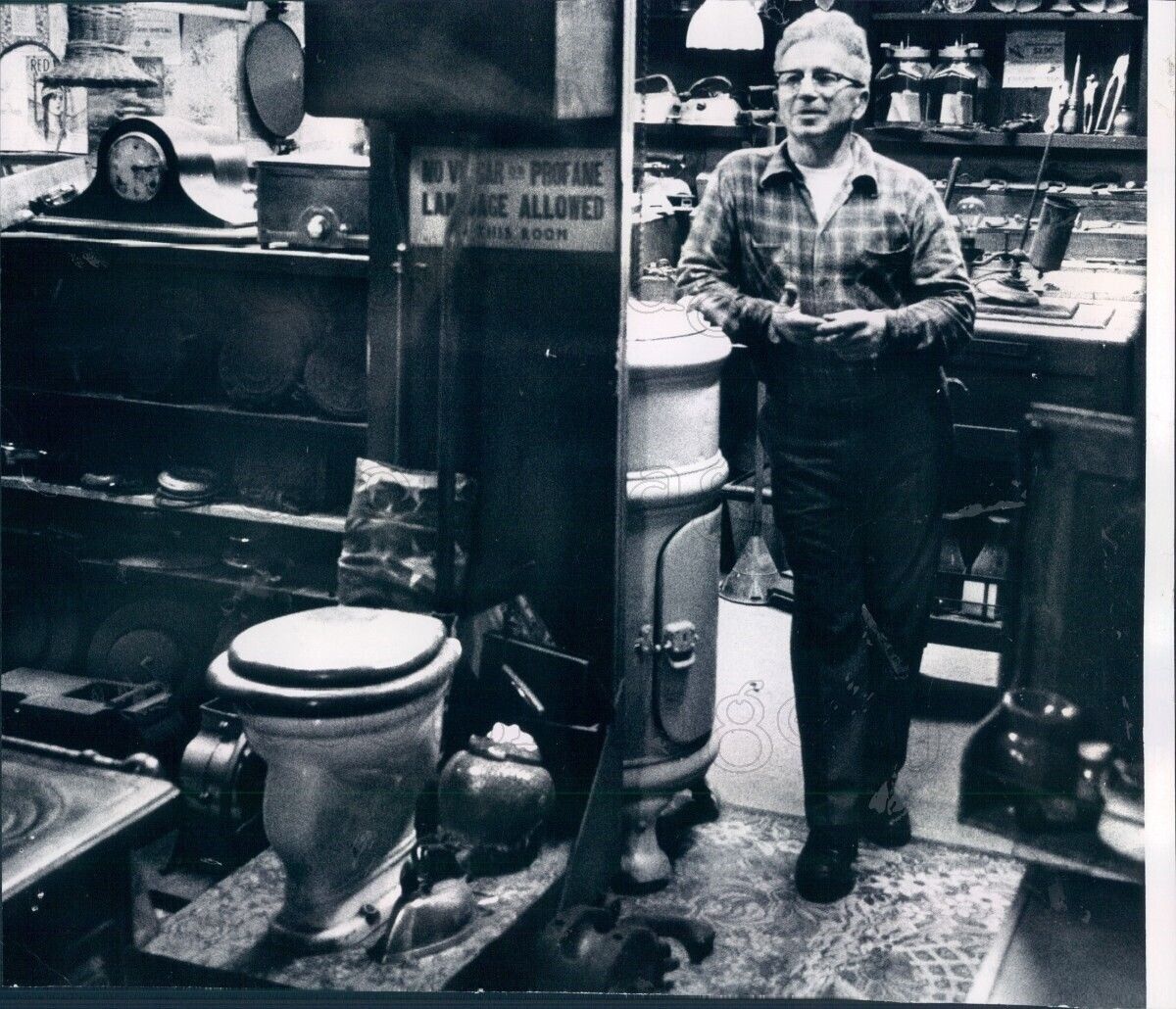
Pete administered my Novice license exam, and when I received my WN7PGE license, Pete immediately came through for me. He loaned me his prized Harvey Wells transmitter from his museum. One look at it told me that he should be proud of it. It was amazing just to look at. Thank you, Pete.
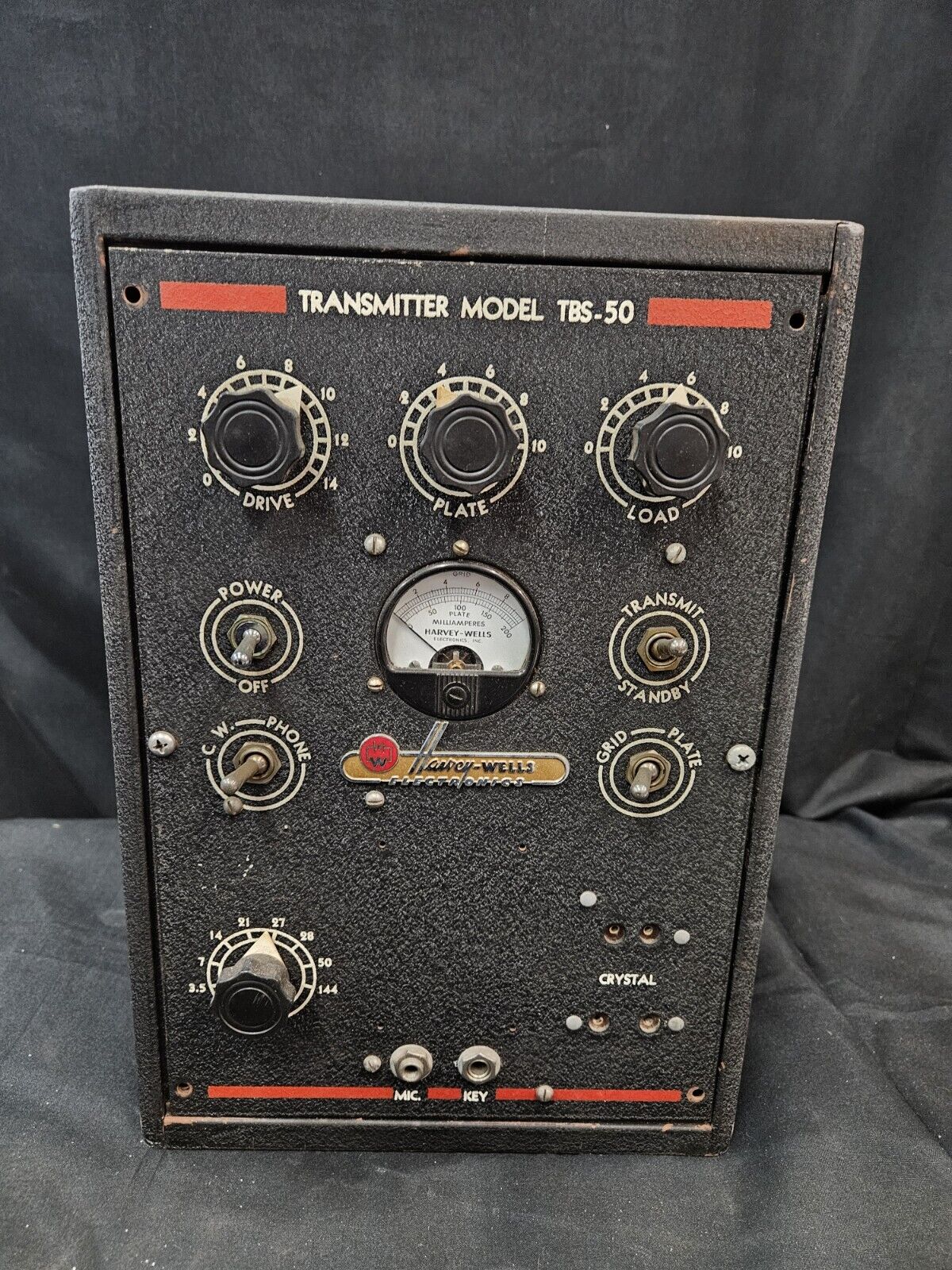
Harvey-Wells Transmitter, exactly like the one Pete loaned me.
Ken and Pete were highly influential. However, they taught me very little about radio electronics and antennas. I guess they knew I could get all of that at home. And I did.
My Dad was a cheerleader for my interest, and it seems that to a degree, Dad did ham radio through me. That became clear when he gave me a set of reel-to-reel tapes for practicing Morse Code! Yes, he had, at one time tried and failed to learn Morse Code and license as a ham. But he knew radio electronics inside and out. From the time I was in grade school I travelled with him as he worked on the radios of fishing boats and the two-way radios of businesses around town.
So when I wanted to put up a dipole for 80 meters, Dad just happened to have 130 feet of good copperweld wire that he said would be great for the purpose. Did he happen to have 100 feet of RG8 coax to feed it? Sure, and he showed me how to solder up the connectors on it. When I needed a relay for switching between transmit and receive functions, Dad just happened to have a relay that would work.
One of Harvey McGuire's core values was personal responsibility. Having Pete Lapinski's prized antique transmitter at my radio desk just made him nervous. What if his son fried that radio?? I had the Harvey-Wells for just a short time when Dad came home with a used Heathkit DX-40 transmitter for me so that I could return Pete's transmitter. I don't know where Dad got the DX-40. But certainly it came from another ham in town. Did Dad buy it, or was it a donation for a Novice? I don't know, but I do know that lots of people helped me on my way.

Heathkit DX-40
Initially, I was getting by with a Hallicrafters shortwave receiver. Similar to the arrival of the DX-40, one day Dad showed up with a Hammarlund Super-Pro receiver. The Super-Pro was the gold standard of receivers in the late 1930s and somehow it turned out that a local ham wanted me to have it! I still do. Thanks, Dad.
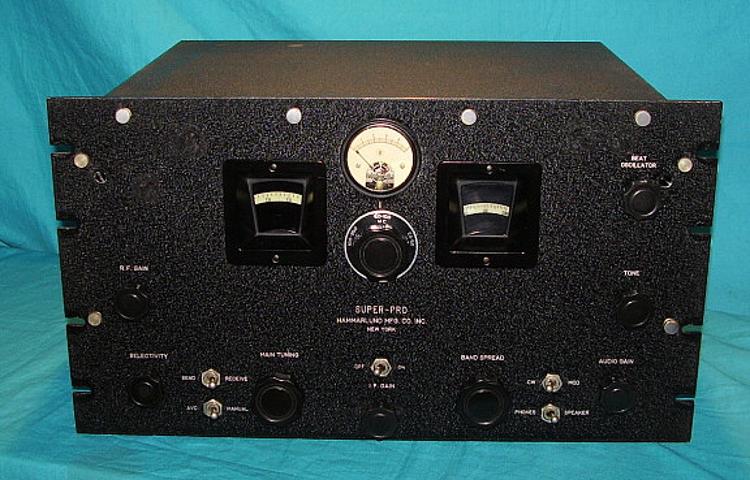
Hammarlund Super-Pro
Did I mention? When I thought it would be a good idea to put up a cubical quad on the garage roof? Yeah. Dad started welding up a tower for that. Thanks, Dad.
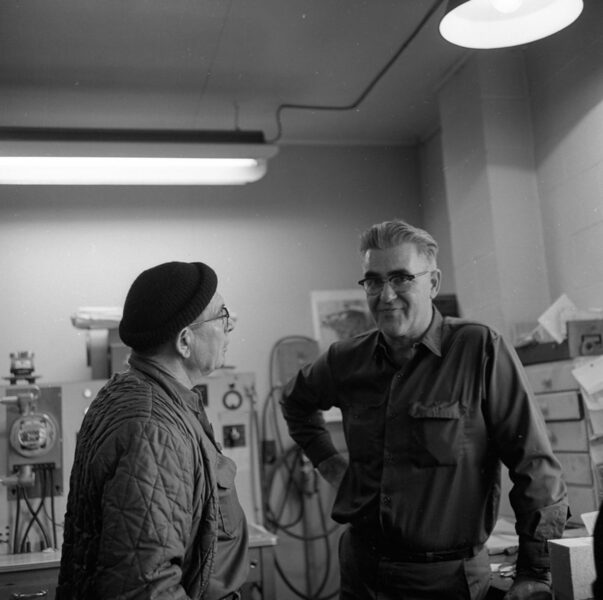
Harvey McGuire at work (1960s)
I could never have got it all together without my Elmers: Ken, Pete, and Dad. But because my Dad was my agent for equipment acquisition, I can never be quite sure what other hams also supported me. I led a privileged life in a wonderful community.
2025 2024 2023 2022 2021 2020 2019 2018 2017 2016 2015 2014 2013 2012 2011 2010 2009 2008 2007 2006 2005 2004
Comments
I welcome your comments. You do NOT need to sign in to leave a comment. If you create an account and sign in, my comment system will notify you of replies to your comment. Thanks for stopping by.--Duane McGuire
